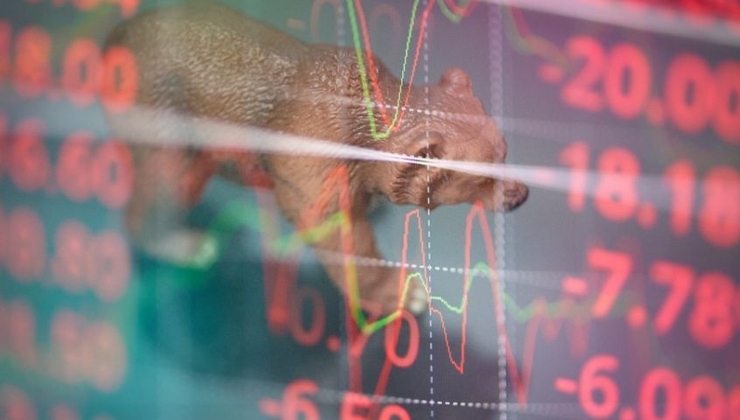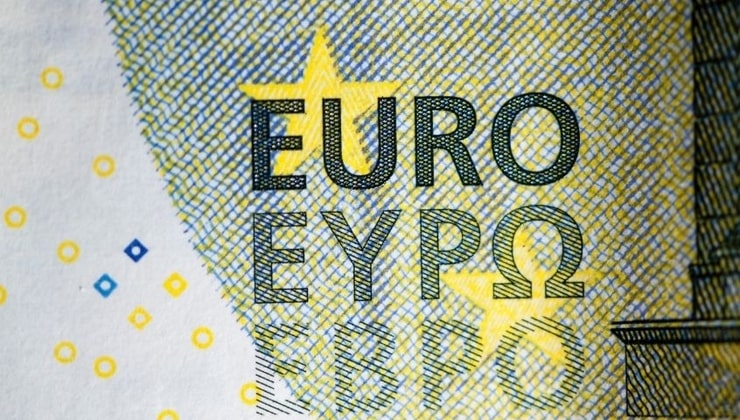CFD sind komplexe Instrumente und beinhalten wegen der Hebelwirkung ein hohes Risiko, schnell Geld zu verlieren.72.6% der Kleinanlegerkonten verlieren Geld beim CFD-Handel mit diesem Anbieter. Sie sollten überlegen, ob Sie verstehen, wie CFD funktionieren und ob Sie es sich leisten können, das hohe Risiko einzugehen, Ihr Geld zu verlieren.
The week ahead: Focus falls on tech volatility, ECB meeting, and EU/UK talks

We’ve certainly seen equity vol pick up of late, with the VIX pushing int 38% on Friday. That said, there was a remarkable turnaround on Friday with the VIX closing at 30.75%, which can be partly explained by the fact the S&P 500 rallied 2.2% from the session low of 3349 to close -0.9%. The NAS100 closed -1.3%, but again off the lows.
How will Asia trade that move? Interestingly NAS100 futures are down 0.7% on the open, so maybe that’s setting the scene for the week?
News that Softbank had joined what retail traders have been doing for some time and lumping into call (option) buying in single stock options was disclosed initially by Zerohedge, but the FT gave the story real momentum. This didn’t surprise given the focus of rising implied vol in a bullish market as traders were paying up for upside structures.
So, in a simplistic world trader’s have been huge buyers of out-of-the-money call options that allow them to leverage up. The market maker (MM) who sells/writes the call is now “short gamma” in size. The MM will look to hedge the position, because while they have netted the premium they are on the hook for unlimited loss if the underlying goes against them and the stocks only went one-way. So, the MM buys the underlying stock or S&P 500/NAS100 futures and so you get a circular loop and a parabolic move in names like Tesla. It resulted in poor index breath and correlations between S&P 500 constituents moving to effectively zero, but it explains the rise and rise of tech.
The question now, is whether this trade is over or whether after this flush out it gets new life?
Trading higher real yields
What I liked on Friday was that we saw a chunky sell-off in Treasuries, with US10s +8bp, and 30s +11bp. At the same time, inflation expectations (breakevens) were up smalls, so ‘real’ yields were up 6bp in US10s, yet the equity buyers were not put off and there was no collapse in the market. In fact, they came back and rotated into value over growth, which is a theme I have been writing about. However, it was always about timing as it always is in trading. The move in yields was interesting in itself, with a decent payrolls report in play, especially on the unemployment rate (8.4% vs 9.8% eyed). Some market chatter that the Chinese were preparing to dump US Treasuries (yawn), while the market will need to absorb $108b in new bond issuance this week, as well as a ton of investment-grade corporate debt.
So, impending volatility in US Treasuries and specifically, if real yields become less negative could have big implications for equity (and the USD). Where (if yields go higher) I’d look at long XLF ETF/short QQQ or long Russell (or S&P 500)/short NAS100 as a pairs trade. It may negatively impact gold although that really depends on the USD, because despite a move in real yield the USDX closed unchanged on Friday. With traders bidding up EURUSD from 1.1781 to close 1.1838.
With the EUR in mind, there is a close focus on the EUR this week as we head to Thursday’s ECB meeting (21:45 AEST), in the absence of much US data this will be a marquee event of the week. We won’t see any changes to policy as such, but after Chief Economist Lane’s recent EUR jawboning and record low core inflation, the market is expecting a dovish narrative – if for no other reason than to keep pace with the Fed. So, will the outcome live up to expectations?
EU/UK trade talks to impact the GBP?
I am also watching GBP implied vols this week, as the next round of Brexit trade talks gets underway. The GBP has been a risk currency of late moving along with the likes of AUD and NZD, but we ask whether the GBP could start to revert back to taking its direction and variability from political news flow. The current level of Implied vols suggest that is unlikely and trade talks are not impacting in any great capacity.
Expectations for a breakthrough are obviously incredibly low and both sides have played hardball. In fact, going off the FT article there are plans in the works to publish a draft internal market bill on Wednesday, which would be a fallback option in case little is agreed. This will not sit well with the EU and the stakes are high where the Telegraph has disclosed that Boris Johnson will set a deadline of 15 October to get a deal or move on.
The implied range in cable on the week is 1.3113 to 1.3384, so I like to lean into these levels. But it will be interesting to see if the GBP becomes somewhat more politically minded. Perhaps the best way to see and express that is not against the USD but crosses.
Related articles
Bereit zu traden?
Es ist einfach, ein Pepperstone-Konto zu eröffnen. Stellen Sie Ihren Antrag innerhalb von Minuten, auch mit einer geringen Einzahlung. Beginnen Sie Ihre Reise mit Pepperstone noch heute.
Bei diesem Artikel handelt es sich um eine Werbemitteilung. Diese Information wurde von Pepperstone GmbH bereitgestellt. CFD sind komplexe Instrumente und beinhalten wegen der Hebelwirkung ein hohes Risiko, schnell Geld zu verlieren. Zwischen 74 % und 89 % der Kleinanlegerkonten verlieren beim Handel mit CFD Geld. Sie sollten überlegen, ob Sie verstehen, wie CFD funktionieren und ob Sie es sich leisten können, das hohe Risiko einzugehen, Ihr Geld zu verlieren. Zusätzlich zum untenstehenden Haftungsausschluss enthält das auf dieser Seite enthaltene Informationsmaterial weder eine Auflistung unserer Handelspreise noch ein Angebot oder eine Aufforderung zu einer Transaktion in ein Finanzinstrument. Pepperstone übernimmt keine Verantwortung für die Verwendung dieser Kommentare und die daraus resultierenden Folgen. Es wird keine Zusicherung oder Gewähr für die Richtigkeit oder Vollständigkeit dieser Informationen gegeben. Folglich trägt der Anleger alleinverantwortlich das Risiko für einzelne Anlageentscheidungen. Jede angebotene Studie berücksichtigt nicht das Investment spezifischer Ziele, die finanzielle Situation und die Bedürfnisse einer bestimmten Person, die sie empfangen kann. Sie wurde nicht in Übereinstimmung mit den gesetzlichen Vorschriften zur Erstellung von Finanzanalysen erstellt und gilt daher als Werbemitteilung im Sinne des Wertpapierhandelsgesetzes (WpHG).

